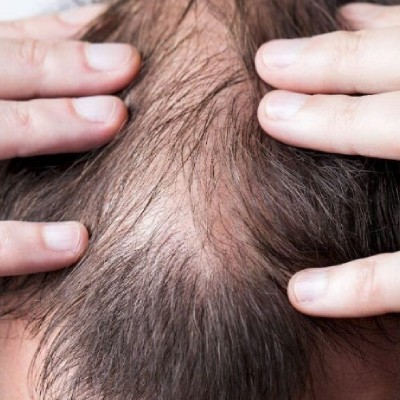


Male pattern baldness may be to blame if you’ve observed your hairline regressing, your widow’s peak becoming more noticeable, a new bald spot, or just a few more hairs on your pillow or in your hairbrush.
When you notice a receding hairline, it’s simple to become alarmed. Fortunately, several safe and efficient hair loss treatments for men available today can help you keep your current hair, encourage your lost hair to regrow refreshingly, and restore your self-esteem.
A genetic and hormonal disease called male pattern baldness might make you lose your hair. By far the most typical reason for male hair loss, it affects more than 50% of all males by age 50. Various names, including the medical term androgenetic alopecia and male pattern baldness.
Male pattern baldness typically results in hair loss in other areas of your head and a receding hairline (a V or M-shaped hairline). It’s a frequent problem that many adult men exhibit in some capacity.
Male pattern baldness can occur at any age, but it most frequently affects middle-aged and older men. In their 20s and 30s, many men start to see the first indications of male pattern baldness, such as a receding hairline or scattered thinning.
Male pattern baldness is not the only cause of hair loss in young men. Stress, anxiety, traumatic events, medical disorders, particular medications, and in some cases, nutritional deficiencies are other causes of hair loss in those under 25.
Male pattern baldness is mostly brought on by hereditary factors and androgen hormones, also known as male sex hormones.
These are some important details regarding male pattern baldness.
Genetics, or family history of baldness, is one factor that contributes to male pattern baldness. Male sex hormones known as androgens have been linked in studies to male pattern baldness. The androgens serve various purposes, one of which is controlling hair growth.
Hair loss is the most obvious and conspicuous sign of male pattern baldness. Male pattern baldness causes a wide range of hair loss patterns, from diffuse thinning to a receding hairline.
Below, we’ve covered the typical male pattern baldness symptoms in more detail and how each problem can affect you if you’re predisposed to this type of hair loss.
Hairline Receding
As their hairline begins to recede, most men start to see male-pattern baldness. The traditional M-shaped hairline, with receding corners and a larger widow’s peak area, might form due to male pattern baldness.
Reduced Crown
Male pattern baldness does not always result in hair loss along the hairline. The hair near your crown may start to fall out and appear thinner if you are prone to male pattern baldness but do not have a receding hairline.
Widespread Thinning
A type of hair loss known as diffuse thinning thins your hair throughout your scalp without having noticeable consequences on your hairline or other particular locations.
The look and pattern of the hair loss are typically used to identify classic male pattern baldness. Various medical disorders can cause hair loss. It might be the case if you shed a lot of hair, have hair breakage, or experience hair loss accompanied by redness, scaling, pus, or pain. A skin biopsy, blood testing, or other procedures can be required to identify further conditions that lead to hair loss; for a diagnosis from a hair expert, visit the closest AHS clinic.
There are procedures available for guys who would like to appear to have a fuller head of hair and are dissatisfied with how they look. AHS Clinic offers multiple hair loss treatments for men that are safe and performed by expert surgeons.
If you are experiencing persistent hair loss and want treatment, make an appointment with our hair doctor. Discuss early hair regrowth treatment options for men with your doctor if you’re suffering from a receding hairline to prevent major permanent baldness.
Also, consult your doctor if you notice more hair falling out than usual when brushing or washing it or if it falls out suddenly or in patches. The experts at AHS are always available and can help you get your desired hair back with 100% safe procedures.













Hair loss problems affect men more than women because of their increased sensitivity to DHT, the hor...

Hair loss problems do not only affect the appearance of a person but also have a mental impact. Whil...

Pilates is a physical fitness system which improves flexibility, posture, core strength, coordinatio...
Subscribe to our email newsletter for helpful tips and valuable resourses
Join forces with Advanced Hair Studio! Explore exciting collaboration opportunities tailored for influencers. Let's redefine haircare together.
Connect now
